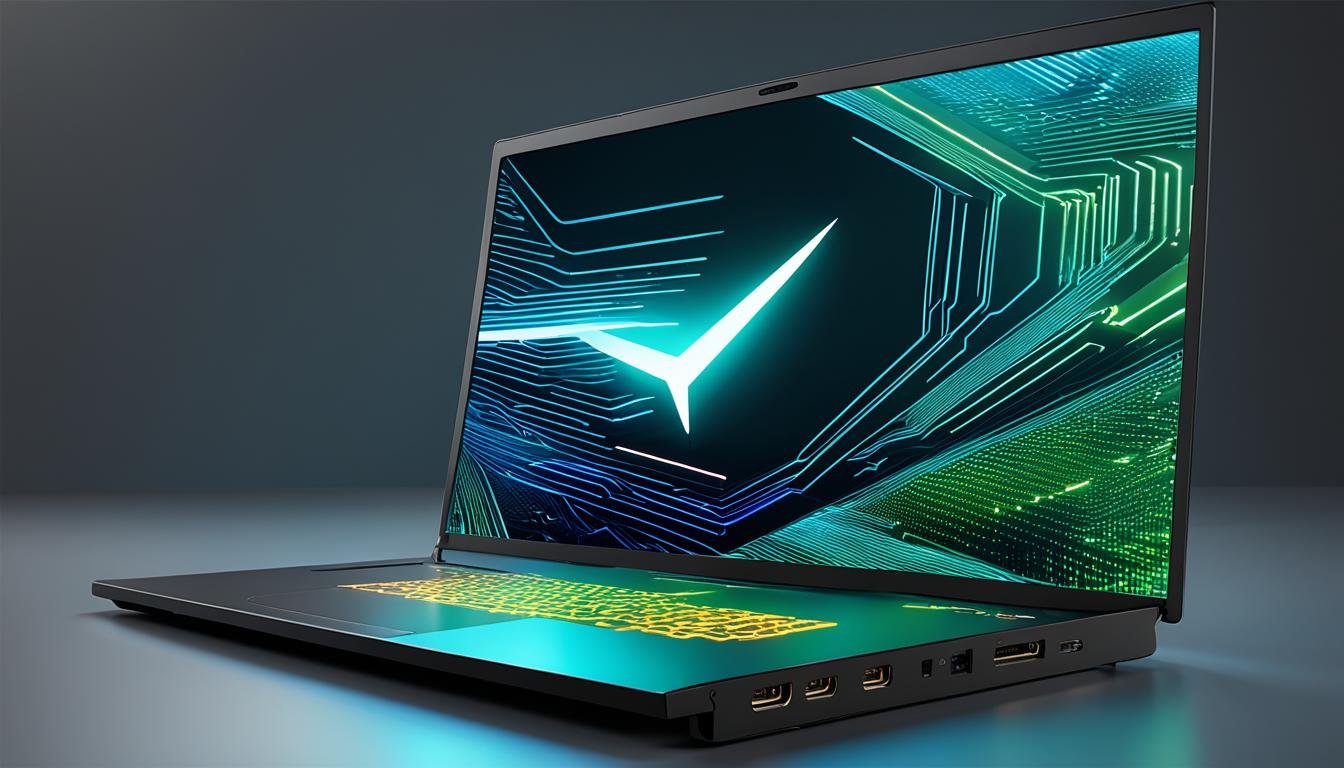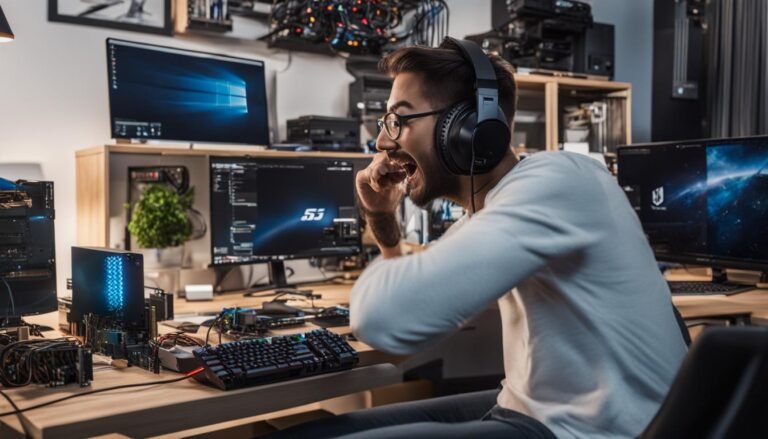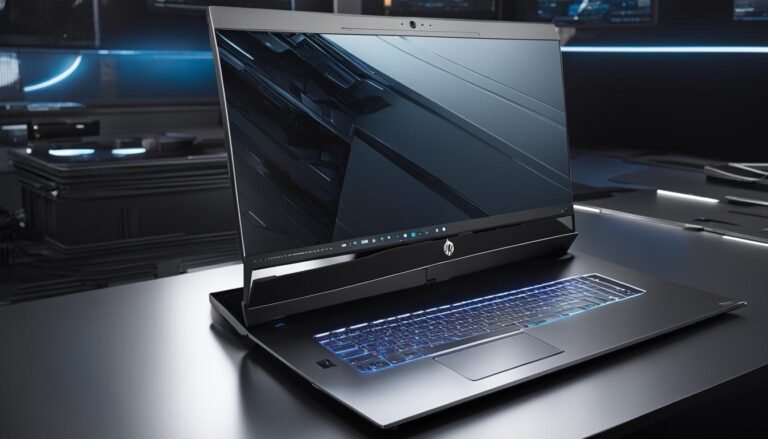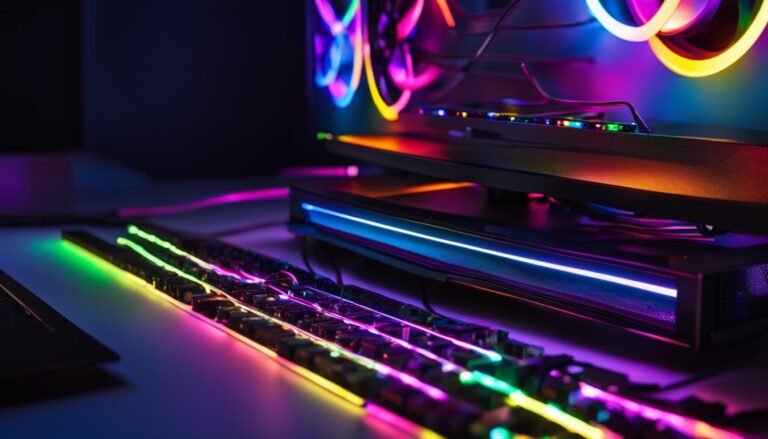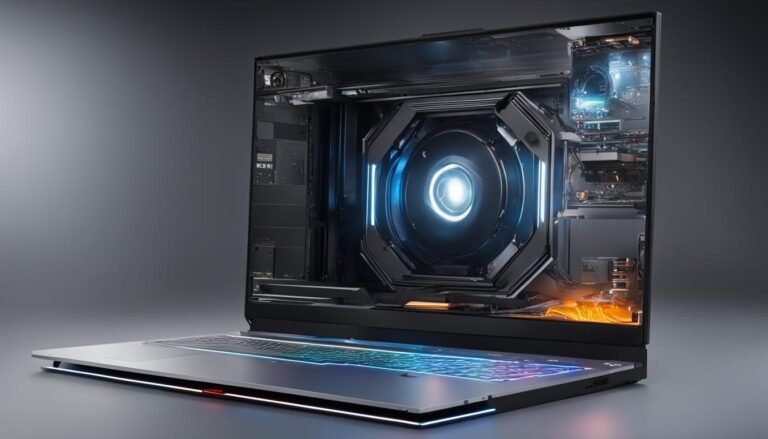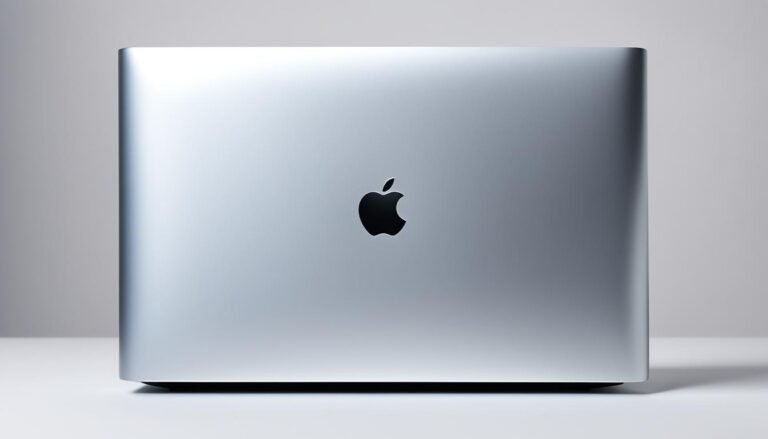Boost Your Rendering: Top External GPU Solutions
External graphics processing units (GPUs) have become an essential tool for boosting rendering capabilities. In this article, we will explore the top external GPU solutions available in the market today. Whether you’re a gamer or a professional working with 3D graphics, these external GPUs can provide unparalleled speed and quality in graphics rendering.
Key Takeaways:
- External GPUs are a powerful tool for enhancing rendering capabilities.
- They offer flexibility in upgrading and improving the graphics power of your system.
- Choosing the right GPU and eGPU enclosure is crucial for optimal performance.
- An external GPU can greatly improve rendering speed and quality for gaming and professional applications.
- Consider compatibility, performance requirements, and overall value when selecting an external GPU solution.
The Benefits of Using an External GPU for Rendering
Using an external GPU for rendering offers several advantages. First, it allows you to enhance the graphics power of your laptop or workstation, enabling smoother and faster rendering. With the additional processing power provided by an external GPU, complex graphics and animations can be rendered more efficiently, resulting in reduced render times and improved overall performance.
Second, utilizing an external GPU provides the flexibility to upgrade your graphics processing capabilities without having to replace your entire system. As technology advances and new GPUs are released, you can easily swap out your current external GPU for a more powerful one, keeping your system up to date and ensuring optimal rendering performance.
Furthermore, using an external GPU can improve the overall performance of your computer. By offloading graphics-intensive tasks to the dedicated GPU, your system’s CPU is freed up to handle other processes, resulting in more efficient multitasking and smoother overall operation.
“With an external GPU, I was able to significantly improve my rendering workflow. The increased graphics power allowed me to handle complex 3D scenes with ease, and the flexibility to upgrade gave me peace of mind knowing that my system can keep up with future demands.”
Top External GPUs for Renderers
When it comes to finding the best external GPU for rendering, there are several top options available that can significantly enhance your graphics processing power. These external GPUs offer the capability to handle demanding rendering tasks like video editing, 3D rendering, and more, allowing for faster and more efficient workflows. Here are some of the top choices:
1. NVIDIA GeForce RTX 3080
The NVIDIA GeForce RTX 3080 is a powerhouse GPU that delivers exceptional performance for rendering. With its advanced architecture and ray tracing capabilities, it can handle even the most complex rendering tasks with ease. Whether you’re working on high-resolution videos or detailed 3D models, the RTX 3080 provides the speed and precision you need.
2. AMD Radeon RX 6900 XT
The AMD Radeon RX 6900 XT is another top contender for rendering tasks. With its high core count and impressive memory bandwidth, this GPU can handle demanding rendering workloads with ease. Its advanced features, such as hardware-accelerated ray tracing and variable rate shading, further enhance its rendering capabilities.
3. ASUS ROG XG Station
The ASUS ROG XG Station is a popular choice for those seeking an external GPU solution. This compact and lightweight enclosure allows you to use your preferred GPU for rendering, providing added flexibility and performance to your workflow. Its Thunderbolt connectivity ensures high-speed data transfer and seamless integration with your system.
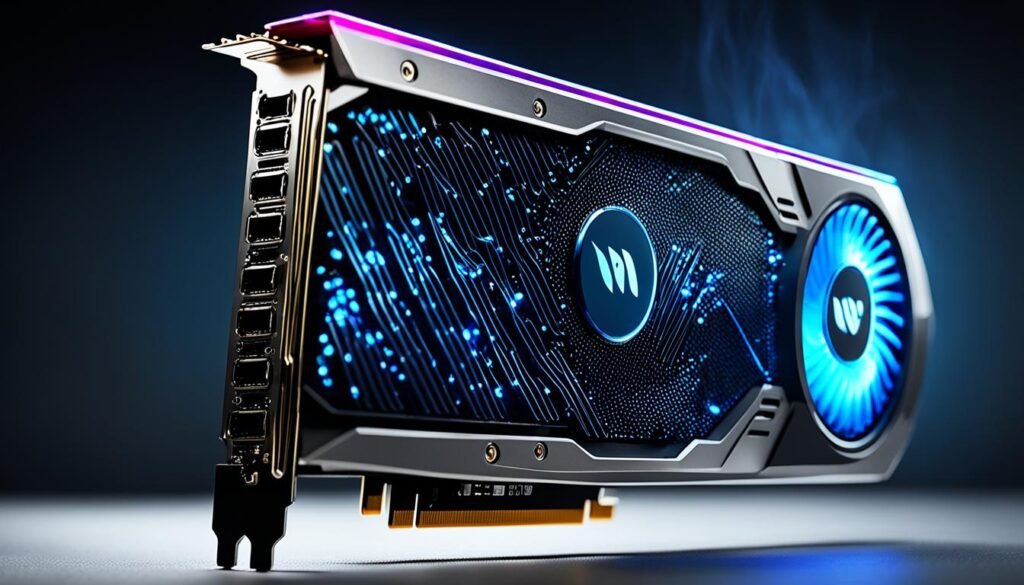
The Razer Core X is a well-regarded eGPU enclosure that offers compatibility with a wide range of GPUs. Its spacious design allows for easy installation and removal of the GPU, making it a convenient option for users who frequently switch between different graphics cards. The Core X supports Thunderbolt 3 connectivity, ensuring fast and stable data transfer.
5. Gigabyte AORUS Gaming Box
The Gigabyte AORUS Gaming Box is a compact eGPU solution that packs a punch. Despite its small size, it offers powerful graphics processing capabilities, making it an excellent choice for rendering tasks. Its sleek design and lighting effects add a touch of style to the setup.
These are just a few of the top external GPUs available for renderers. Each of these options brings its own unique features and benefits, allowing you to choose a solution that best fits your specific needs. Consider the performance, compatibility, and price when making your decision, and you’ll be well on your way to boosting your rendering capabilities.
Factors to Consider When Choosing an External GPU for Rendering
When it comes to selecting an external GPU for rendering, there are several important factors to take into account. These considerations will help you make an informed decision based on the compatibility, performance, price, and value of the GPU, ensuring an optimized rendering experience.
Compatibility with Your System and eGPU Enclosure
The first factor to consider is the compatibility of the external GPU with your system and the eGPU enclosure you plan to use. Ensure that the GPU is compatible with your operating system and has the necessary drivers available for installation. Additionally, check if the eGPU enclosure supports the specific GPU you intend to use, as compatibility can vary between different models and manufacturers.
Performance Requirements for Your Rendering Tasks
Determine the performance requirements for your rendering tasks. Consider the complexity and size of the projects you work on, as well as the software and applications you use. Assess the GPU’s specifications, such as core count, memory capacity, and clock speed, to ensure it can handle the demands of your specific rendering workload. Look for benchmarks and performance reviews to gauge the GPU’s capabilities in real-world rendering scenarios.
Price and Value
The price and value of the external GPU are significant factors to consider. Determine your budget and weigh it against the performance and features offered by different GPUs. While it’s tempting to go for the most expensive option, assess whether the additional cost provides a substantial improvement in rendering performance that is worth the investment. Consider the long-term value and potential for future upgrades and compatibility as well.
Additional Features and Technologies
Finally, take into account any additional features or technologies that may enhance your rendering experience. Some GPUs offer specific optimizations for certain rendering tasks, such as video editing or 3D modeling. Others may support advanced rendering techniques like ray tracing or have built-in cooling solutions for improved thermal performance. Evaluate these extra features and assess their relevance to your specific rendering needs.
Choosing the right external GPU for rendering requires careful consideration of compatibility, performance, price, and value. By assessing these factors and aligning them with your specific rendering requirements, you can make an informed decision that maximizes the potential of your rendering setup.
How to Set Up an External GPU for Rendering
Setting up an external GPU for rendering is a relatively straightforward process. By following these steps, you can unleash the power of an external graphics card and enhance your rendering capabilities.
Step 1: Check Compatibility
First, ensure that your laptop or workstation is equipped with a Thunderbolt 3 or 4 port that is compatible with eGPU technology. This connection is crucial for transferring data quickly and efficiently between your computer and the external GPU.
Step 2: Choose the Right eGPU Enclosure
Select an eGPU enclosure that supports your chosen graphics card. Consider factors such as size, connectivity options, and power supply capacity. Popular eGPU enclosures include the Razer Core X Chroma, Sonnet Breakaway Box 550, and Akitio Node Titan.
Step 3: Connect the eGPU
Connect the eGPU enclosure to your computer via the Thunderbolt port. Ensure a secure connection and proper alignment.
Step 4: Install GPU Drivers
Before using the external GPU, install the necessary drivers for your graphics card. Visit the manufacturer’s website to download the latest drivers and follow the installation instructions.
Step 5: Configure the System
Once the drivers are installed, configure your system to recognize the eGPU as the primary graphics device for rendering. This can be done through your computer’s settings or GPU control panel.
Step 6: Test and Optimize
After completing the setup, test the performance of your external GPU for rendering. Monitor the speed and quality of your rendering tasks and make any necessary optimizations, such as adjusting graphic settings or upgrading drivers.
With these steps, you can harness the power of an external GPU and elevate your rendering capabilities to new heights.
| Benefits of Setting Up an External GPU for Rendering |
|---|
| Enhanced graphics power |
| Flexibility to upgrade GPU without replacing the entire system |
| Improved overall performance and efficiency |
Tips for Optimizing External GPU Performance in Rendering
To get the most out of your external GPU for rendering, there are a few key tips to consider. By following these recommendations, you can maximize performance and achieve the best possible results.
1. Choose the Right GPU
When selecting an external GPU for rendering, ensure that it is specifically designed for high-performance rendering tasks. Look for GPUs with a good balance of price, power, and compatibility, such as the NVIDIA GeForce RTX series or the AMD Radeon RX series. These GPUs offer excellent rendering capabilities and are widely supported by rendering software.
2. Optimize GPU Settings
Adjusting the settings of your external GPU can have a significant impact on performance. In your GPU control panel, prioritize performance by tweaking settings such as power management, texture filtering, and anti-aliasing. Experiment with these settings to find the optimal balance between rendering quality and performance.
3. Keep Drivers Updated
Regularly updating your GPU drivers is essential for ensuring optimal performance. GPU manufacturers frequently release driver updates that include bug fixes, performance optimizations, and compatibility improvements. Check for driver updates regularly and install them to take advantage of the latest enhancements for rendering.
4. Utilize GPU Acceleration
Many rendering software applications offer GPU acceleration, which leverages the processing power of your external GPU to speed up rendering tasks. Enable GPU acceleration in your software settings to take full advantage of the capabilities of your external GPU. This can significantly reduce rendering times and improve overall performance.
5. Maintain Proper Cooling
Rendering tasks can put a heavy load on your external GPU, generating a significant amount of heat. To prevent throttling and ensure optimal performance, make sure that your GPU has adequate cooling. Use a well-ventilated enclosure, install additional fans if necessary, and regularly clean the cooling system to prevent dust buildup.
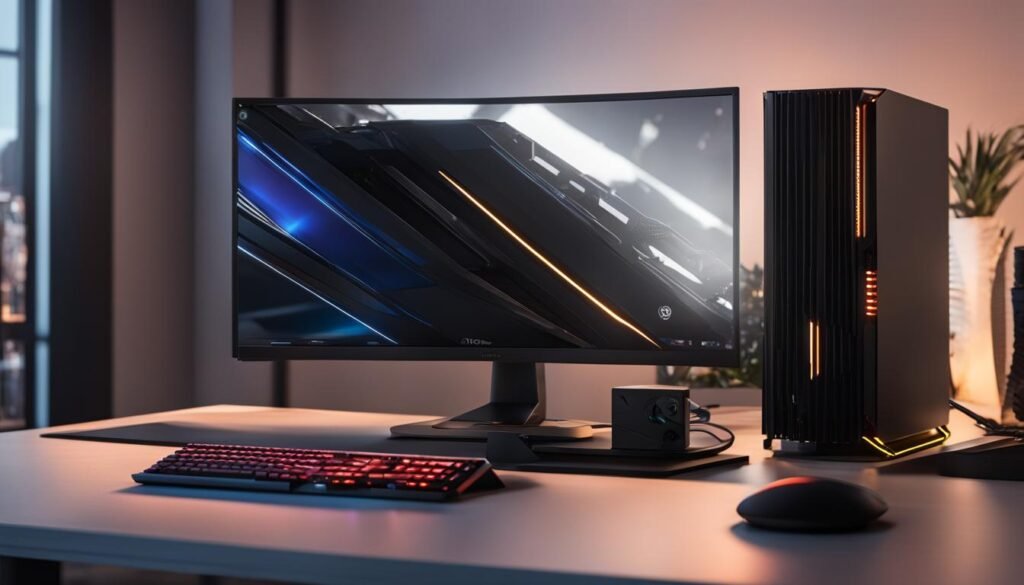
6. Optimize Rendering Software Settings
Within your rendering software, there are often various settings and options that can be adjusted to optimize rendering performance. Pay attention to settings related to multi-threading, memory utilization, and buffer sizes. Experiment with different settings to find the configuration that works best for your specific rendering needs.
7. Monitor GPU Performance
Use monitoring tools to keep an eye on the performance of your external GPU during rendering tasks. Monitor metrics such as GPU temperature, clock speed, and memory usage. By monitoring these metrics, you can identify any performance bottlenecks or issues that may be affecting the rendering process and take appropriate action.
By following these tips, you can optimize the performance of your external GPU for rendering, allowing you to achieve faster rendering times and higher-quality outputs. Experiment with different settings and configurations to find what works best for your specific workflow and hardware setup.
Important Considerations for Renderers Using External GPUs
While external GPUs can greatly enhance rendering performance, it’s crucial to consider a few key factors to ensure optimal results. By keeping these considerations in mind, renderers can make informed decisions when choosing an external GPU solution for their graphics-intensive tasks.
1. Thunderbolt Interface Limitations
It’s essential to be aware of any limitations or bottlenecks imposed by the Thunderbolt interface when using an external GPU for rendering. Although Thunderbolt technology offers high-speed data transfer, it may impact the full potential of your GPU. Be sure to research and understand the Thunderbolt version supported by your system and the impact it may have on your graphics card’s performance.
2. Power Delivery in eGPU Enclosures
The power delivery capabilities of your eGPU enclosure can have an impact on the overall performance of an external GPU for rendering. It’s crucial to select an eGPU enclosure that can provide sufficient power to the graphics card you intend to use. Inadequate power delivery can lead to suboptimal performance and potential stability issues. Review the specifications and power delivery capabilities of different eGPU enclosures to ensure compatibility with your chosen GPU.
3. Cost and Value Analysis
Consider the overall cost and value of the external GPU solution for rendering. This analysis involves evaluating both the initial purchase cost and any future upgrade considerations. Determine your budget and carefully weigh it against the performance benefits the external GPU can provide. Additionally, consider the longevity of the solution and whether it aligns with your future rendering needs. Opting for a high-quality and reliable external GPU may require a higher upfront investment but can offer long-term value and improved productivity.
By considering these important factors, renderers can make informed decisions when selecting an external GPU for rendering, ensuring optimal performance and value for their specific graphics card needs.
| Consideration | Key Points |
|---|---|
| Thunderbolt Interface Limitations | – Research Thunderbolt version compatibility – Understand performance impact on GPU |
| Power Delivery in eGPU Enclosures | – Select enclosure with sufficient power delivery – Avoid inadequate power supply |
| Cost and Value Analysis | – Evaluate overall cost and future upgrade potential – Consider long-term value and productivity |
Comparison of External GPU Enclosures for Rendering
When it comes to selecting an external GPU enclosure for rendering, it’s essential to consider the various options available and compare their features. Several factors are worth examining, including power supply capacity, connectivity options, size, weight, and noise levels. By carefully assessing these aspects, you can choose an enclosure that best suits your specific rendering needs.
Razer Core X Chroma
The Razer Core X Chroma is a popular choice among renderers seeking a high-performance external GPU enclosure. This sleek and compact enclosure features a powerful 700W power supply, enabling it to support a wide range of graphics cards. It also offers a variety of connectivity options, including Thunderbolt 3 and USB Type-C ports, ensuring seamless integration with your computer. With its customizable RGB lighting and additional USB ports, the Razer Core X Chroma provides both functionality and style.
Sonnet Breakaway Box 550
Another excellent option for rendering is the Sonnet Breakaway Box 550. This enclosure is equipped with a 550W power supply, making it capable of handling demanding graphics cards. The Sonnet Breakaway Box 550 offers Thunderbolt 3 connectivity and provides ample space for larger graphics cards, ensuring maximum compatibility. With its sturdy build and whisper-quiet operation, this enclosure is an ideal choice for professionals who prioritize both performance and silent rendering environments.
Akitio Node Titan
The Akitio Node Titan is a reliable external GPU enclosure known for its flexibility and expandability. With a 650W power supply, it can accommodate high-powered graphics cards, making it suitable for rendering-intensive tasks. The enclosure offers Thunderbolt 3 connectivity and boasts an effortless tool-free installation process. Its large 120mm fan ensures efficient cooling, keeping the GPU temperature in check during extended rendering sessions.
| Feature | Razer Core X Chroma | Sonnet Breakaway Box 550 | Akitio Node Titan |
|---|---|---|---|
| Power Supply Capacity | 700W | 550W | 650W |
| Connectivity Options | Thunderbolt 3, USB Type-C | Thunderbolt 3 | Thunderbolt 3 |
| Size | Mid-size | Compact | Compact |
| Weight | Approx. 7.7 lbs | Approx. 2.2 lbs | Approx. 6.6 lbs |
| Noise Levels | Quiet | Whisper-quiet | Quiet |
Table: Comparison of External GPU Enclosures for Rendering. The table presents a detailed overview of the key features of the Razer Core X Chroma, Sonnet Breakaway Box 550, and Akitio Node Titan.
Each of these external GPU enclosures offers distinct advantages and considerations, catering to different rendering requirements. It’s crucial to evaluate these options based on your specific needs, power requirements, connectivity preferences, and desired form factor. By carefully analyzing these factors, you can select the external GPU enclosure that provides optimal performance and seamless integration with your existing rendering setup.
Conclusion
An external GPU for rendering is a game-changer when it comes to enhancing graphics performance on your laptop or workstation. With the right choice of GPU and eGPU enclosure, you can unlock faster and more efficient rendering processes, elevate your gaming performance, and seamlessly handle demanding tasks like 3D rendering and video editing.
Throughout this article, we have explored the top external GPU solutions available in the market, discussed the benefits of using an external GPU for rendering, and highlighted the factors to consider when choosing the best option for your needs. By considering compatibility, performance requirements, price, and additional features, you can make an informed decision in selecting the perfect external GPU.
By setting up your external GPU with the necessary drivers and configuring your system to recognize it as the primary graphics device for rendering, you can optimize its performance and achieve remarkable results. However, it’s important to keep in mind a few important considerations, such as potential limitations imposed by the Thunderbolt interface and the impact of power delivery capabilities of your eGPU enclosure.
Overall, investing in the right external GPU for rendering can revolutionize your graphics capabilities, enabling you to accomplish tasks more efficiently and experience a new level of performance. So, take into account the valuable insights shared in this article, find the perfect external GPU solution, and witness your rendering capabilities reach new heights.
FAQ
What are the benefits of using an external GPU for rendering?
Using an external GPU for rendering allows you to enhance the graphics power of your laptop or workstation, provides the flexibility to upgrade your GPU without replacing your entire system, and can improve overall system performance.
What factors should I consider when choosing an external GPU for rendering?
When selecting an external GPU for rendering, consider compatibility with your system and eGPU enclosure, performance requirements for your specific rendering tasks, price and value, and any additional features or technologies that may enhance your rendering experience.
How do I set up an external GPU for rendering?
To set up an external GPU for rendering, ensure your laptop or workstation has a compatible Thunderbolt 3 or 4 port, choose a compatible eGPU enclosure, connect the enclosure to your computer via the Thunderbolt port, install necessary drivers, and configure your system to recognize the eGPU as the primary graphics device for rendering.
What are some tips for optimizing external GPU performance in rendering?
To optimize external GPU performance in rendering, ensure compatibility between the Thunderbolt interface and your GPU, consider power delivery capabilities of your eGPU enclosure, and factor in overall cost and value of the external GPU solution.
What important considerations should renderers using external GPUs be aware of?
Renderers using external GPUs should be aware of limitations or bottlenecks imposed by the Thunderbolt interface, potential impact of power delivery capabilities of eGPU enclosure on GPU performance, and overall cost and value of the external GPU solution.
Which external GPU enclosures are recommended for rendering?
Some recommended external GPU enclosures for rendering include the Razer Core X Chroma, Sonnet Breakaway Box 550, and Akitio Node Titan. Factors to consider when choosing an enclosure include power supply capacity, connectivity options, size, weight, and noise levels.
